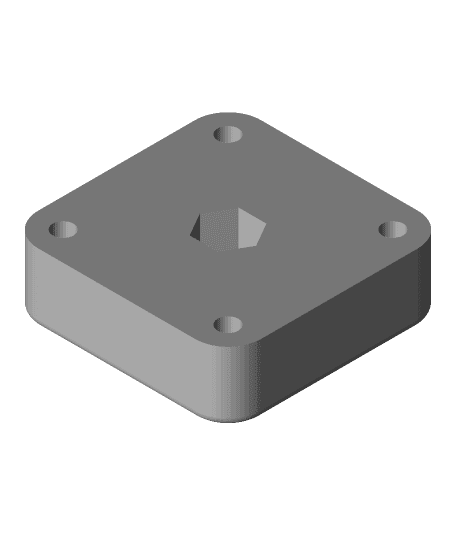Model originally uploaded to Thingiverse at https://www.thingiverse.com/thing:2764880.
An easy to print raspberry pi wireless camera holder with recessed LED holes for 5mm white LEDs. I would highly recommend "diffusing" the LEDs by sanding them with 400 grit sandpaper before installation. Fits perfectly on a COTS gooseneck holder.
Before the details, how about a timelapse of one of these cameras being printed:
https://twitter.com/brendonbuilds/status/955457300524920832
Now, on to the build!
Parts: Raspberry Pi Wireless Raspberry Pi Camera
Gooseneck with clamp: http://amzn.to/2EYHpgw
8 - 5mm white LEDs 8 - 100 ohm resistors 8 - #2 0.25" screws 4 - #2 0.5" screws 4 - #2 0.75" screws 1 - M4 12mm bolt/nut 400 grit sandpaper (optional, but recommended)
Installation:
Mount the official raspberry pi camera to the front with #2 0.25" screws then install the LEDs/wiring. I'd recommend using a 3d pen to secure the LEDs in place. Mount the raspberry pi wireless module to the back with #2 0.25" screws. After testing all the wiring/connections (important!) join the front and back pieces with the #2 0.75" screws.
Place the M4 nut into the recess in the back anchor. I'd recommend using a 3d pen to secure the nut in place. Use the #2 0.5" screws to join the back anchor to the back of the camera assembly. Use the M4 bolt to create a rotating joint between the bracket and the back anchor.
Connect the bracket to the threaded end of the gooseneck. This connection is purposefully very tight and will cause the threads to really dig into the plastic.
Software:
I use the motion service as a webcam server to line up the shots before starting a timelapse. Here's a great writeup for setting up the webcam:
https://pimylifeup.com/raspberry-pi-webcam-server/
I use raspistill to capture the timelapse images:
https://www.raspberrypi.org/documentation/usage/camera/raspicam/timelapse.md
I then use avidemux to convert from .avi to .mp4 (mp4v2) (use hardware h264 for speed and twitter compatibility):
